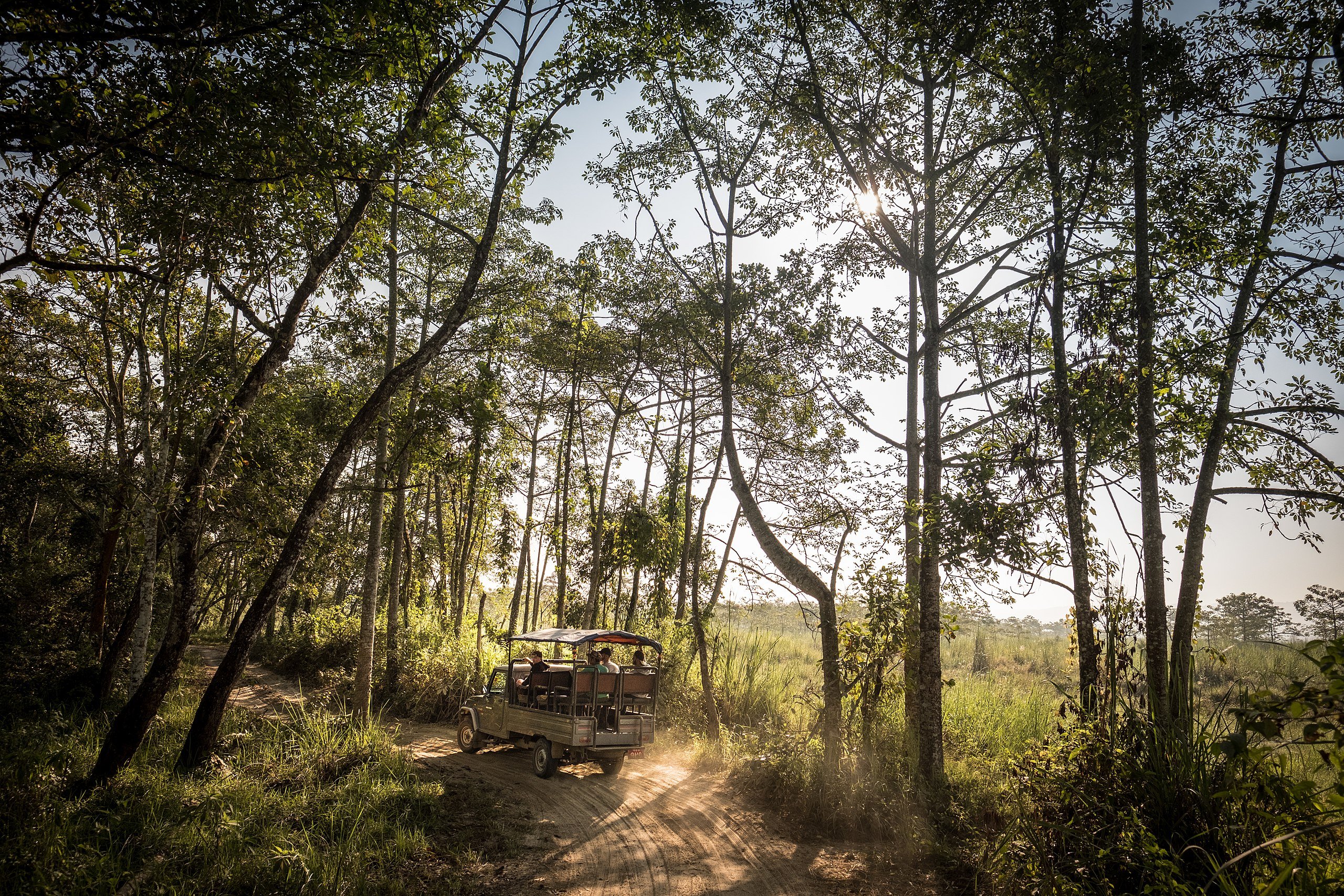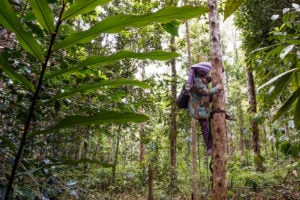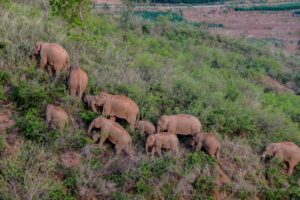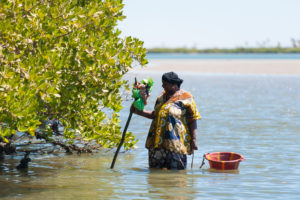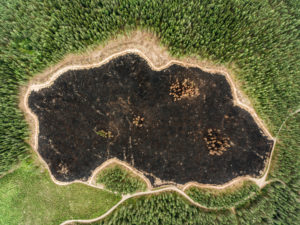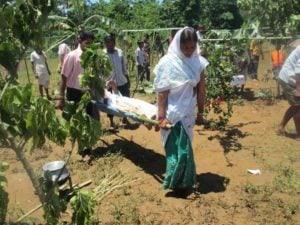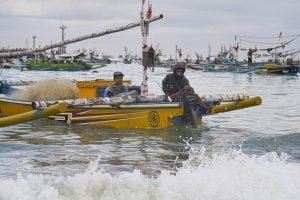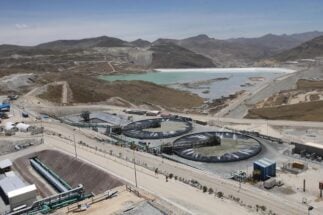When governments meet next year to finalise a global deal to halt loss of the biodiversity on which human wellbeing depends, “30 by 30” will be one phrase on everybody’s lips. The target – to protect at least 30% of Earth’s land and sea by 2030 – is part of a package being negotiated under the UN Convention on Biological Diversity (CBD) for the next decade and beyond.
Absent a collapse of the talks, it will be the headline outcome of the CBD’s COP15 meeting in Kunming, China, in April–May 2022. And big news it would be. Today, just 17% of land and 8% of the sea are protected. Scientists say 30×30 could go a long way towards averting the biodiversity crisis while also helping to address climate change and the risk of future pandemics.
But 30×30 is controversial because protected areas have a chequered history. While some have saved species from extinction, others – so-called “paper parks” – are ineffectively managed. A disturbing number of protected areas have also harmed local people through forced displacement and human rights abuses inflicted by militarised park guards.
Amid fears that 30×30 could entail more “conservation by coercion”, there are also signs of hope. With adequate support, little-known alternatives to protected areas, known as OECMs and explored below, could address concerns about equity and effectiveness. And there is growing acknowledgement that communities living close to nature are its best stewards, and should be empowered to manage local areas. But there remains a big gap between rhetoric and action. Decisions made in Kunming will determine whether 30×30 repeats or corrects conservation’s past failings.
Mixed feelings
The 30×30 target already has backing from 75 nations in the High Ambition Coalition for Nature and People, co-chaired by Costa Rica, the United Kingdom and France, and from the International Union for the Conservation of Nature. The United States, while not a party to the CBD, has its own 30×30 target in President Biden’s America the Beautiful plan.
But for the CBD, 30×30 is not a done deal. China has reservations, particularly about applying the target to marine areas. Other highly biodiverse countries such as Brazil, India, Indonesia, Malaysia and South Africa are waiting before committing; agreement on 30×30 at COP15 will depend on progress in other areas, such as how much finance rich countries will provide to fund conservation.
Far from the negotiating tables, there are concerns about what 30×30 could mean for people living in areas rich in biodiversity. Survival International, which campaigns for the rights of indigenous peoples, calls 30×30 the “biggest land grab in history” and says it threatens to evict 300 million people by turning their ancestral lands into protected areas.
Jonathan Mazower, the organisation’s communications director, told China Dialogue that the CBD should “drop the 30% target unless and until there are cast-iron safeguards for indigenous peoples and other local communities that will apply to all new and existing protected areas”.
Converging agendas
Other groups working with indigenous peoples, such as Rights and Resources Initiative (RRI) see opportunities as well as risks. RRI points to the body of evidence showing that indigenous and other local communities are far more effective than governments at protecting ecosystems, especially when they have secure rights to those lands. A 2020 study by RRI and the Campaign for Nature showed that recognising tenure rights of communities in areas of high biodiversity would cost less than 1% of what it would cost to resettle those people when creating exclusionary protected areas.
RRI and others – such as the UN Special Rapporteur on Human Rights and the Environment – see 30×30 as an opportunity to shift conservation into a new paradigm, in which rights are the foundation not an afterthought. It is a message that is increasingly being taken up by conservation biologists, who say it would be possible to exceed the 30×30 target by recognising indigenous and community-conserved areas outside of protected areas.
“The single most important thing we can do to conserve life on Earth, and to stabilise the climate, is to support the efforts of indigenous people to have ownership and management of their lands,” says wildlife scientist Eric Dinerstein, director of biodiversity and wildlife solutions at the non-governmental organisation Resolve.
This convergence of conservation and rights agendas was also reflected in the communiqué issued in May 2021 by G7 climate and environment ministers, who committed to “recognising that Indigenous Peoples, and local communities, are full partners in the implementation of this [30×30] target”. In September, nine philanthropic foundations joined the chorus when they announced the biggest ever private funding commitment for conservation – US$5 billion to fund implementation of 30×30.
“I know that many conservation efforts have failed in the past,” said Jeff Bezos, announcing his contribution of US$1 billion. “Top-down programmes failed to include communities. They failed to include Indigenous Peoples that live in the local area. They’ve systematically not worked. We won’t make those same mistakes.”
This is the time for truth. There’s no space for ambiguity anymore.Oscar Soria, campaigns director of Avaaz
But while narratives are shifting, few governments are doing enough to recognise governance of biodiversity by indigenous people and local communities. Area-based conservation remains extremely exclusionary. In 2018, only 0.6% of protected areas were managed by indigenous peoples and local communities. Trust and transparency are in short supply, even in the case of governments that claim to be ambitious, says Oscar Soria, campaigns director of Avaaz.
“We are still not seeing concrete actions from member states of the High Ambition Coalition for Nature and People to set up meaningful spaces for discussion about this issue, let alone spelling out a consistent position that provides all the reassurances, safeguards and guarantees that any area-based conservation measures will be designed and implemented in accordance with UN norms and international law relevant to the rights of indigenous peoples and local communities,” he says. “This is the time for truth. There’s no space for ambiguity anymore.”
Another way
With growing concerns about strict, exclusionary protected areas, attention is turning to little-known alternatives. The Convention on Biological Diversity and its draft 30×30 target call them “other effective area-based conservation measures”, or OECMs. These are areas that conserve biodiversity even if that is not their primary purpose. Examples could include sacred groves, certain kinds of farms, community forests and other economically productive landscapes and seascapes. Crucially, many areas of land and sea that indigenous and local communities manage according to local needs and values, while also conserving nature, could qualify as OECMs.
“If done well, OECM recognition can foster support for these areas, at national and international levels, and help overcome current challenges faced by governing actors including insecure rights, insufficient funding and exclusion from decision-making,” says Georgina Gurney, a senior research fellow at the Australian Research Council Centre of Excellence for Coral Reef Studies at James Cook University.
Parties to the CBD only agreed on how to define OECMs in 2018, which explains why, so far, less than 1% of land and freshwater areas and 0.1% of marine areas have been registered in this category. But potential OECMs are everywhere. A 2019 study of 740 unprotected “key biodiversity areas” in ten countries found that more than three-quarters of these areas were at least partly covered by one or more potential OECMs.
Gurney points out that a key criterion of OECMs is that, for countries to register them, these areas must be effective at conserving biodiversity. By contrast, protected areas only need a goal of conserving biodiversity, rather than a proven impact.
“OECMs hold considerable promise for advancing equitable and effective conservation,” she says. “But whether they deliver on this promise will depend on how the tool is implemented, including importantly, processes of demonstrating biodiversity conservation effectiveness and ensuring that OECM designation strengthens rather than displaces existing local governance.”
Improving 30×30
With so much depending on governments upholding rights and social safeguards in indigenous and community areas, Jonathan Mazower, of Survival International, is doubtful about OECMs and 30×30 more generally.
“These rights are never properly acknowledged,” he says. “No country in the world properly recognises them. In many countries, such as Brazil, the whole system of indigenous rights built up over recent decades is under concerted attack. To think that governments will suddenly make a 180 degree turn from the status quo and finally recognise these rights is naive to put it mildly. It’s far more likely that the 30×30 narrative will be used to increase protected areas, most of which exclude human activity or presence.”
With the main meeting of COP15 just six months away, civil society groups and others – including 49 philanthropic organisations – are urging CBD officials and negotiators to strengthen the draft text of the 30×30 target and its monitoring framework. They want the text to better recognise indigenous and community-conserved areas, strengthen respect for rights, and ensure that governance is truly equitable.
“We would like to see the concept of ‘free, prior and informed consent’ more often,” says Avaaz’s Oscar Soria, referring to the rights of communities to consent to decisions affecting lands they live in and manage. “We also believe the CBD should make it explicit that any protected areas that are contested as ‘land grabs’ shouldn’t be accounted as such under the Convention.”
“These issues must be understood as central and not just as a nice add-on serving to ease consciences, or as a communication feature,” says Soria. “Indigenous people and local communities are starting to be everywhere in speeches but still almost nowhere on stage. And they are certainly still not treated on an equal footing, neither by central governments, obviously, but nor still by the biggest players in conservation. We can do very much better.”
